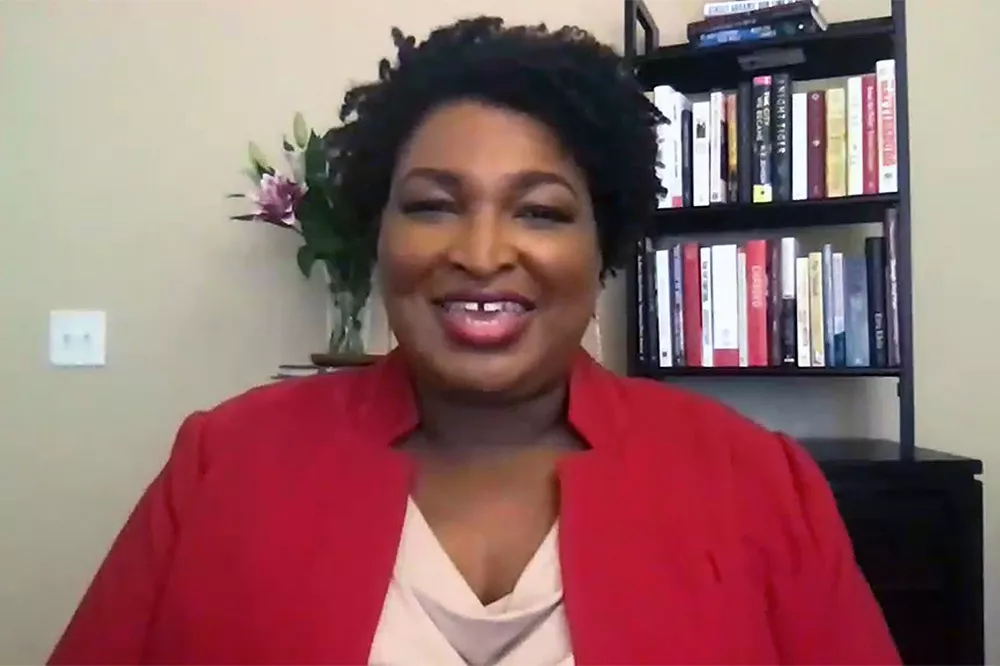On August 26, 1920, after 72 years of marching, picketing, and protesting for the right to vote, suffragists celebrated as the 19th Amendment to the U.S. Constitution was ratified, enshrining American women’s right to vote.
Today, almost exactly 100 years later, delegates to the 2020 NEA Representative Assembly celebrate the achievement of those courageous suffragists whose persistence, passion, and dedication to democratic processes led the largest single expansion of voting rights in U.S. history, and vowed to continue to protect the rights of all Americans to vote.
Thanks to the suffragists, 74.7 million American women voted in the last presidential election, and more are expected to vote this November.
But the work is not over. Americans’ right to vote is under attack, especially the rights of Black and Hispanic voters. In many states, voter suppression efforts include state laws that require voters to supply photo IDs to vote, cuts to early voting opportunities, purges of voter rolls, and redistricting efforts. These voter-suppression efforts disproportionately affect people of color, as well as young and elderly voters.
On Thursday, as the first-ever virtual Representative Assembly convened, President Lily Eskelsen García noted the work of the suffragists as she introduced speaker Stacey Abrams, a former member of the Georgia House of Representatives who started the organization Fair Fight after nearly winning the Georgia governorship.
“I can think of no one better to remind us of our responsibility to preserve and protect democracy at this time, and especially in celebration of the 100th anniversary of women winning the right to cast the vote, than Stacey Abrams. Her organization, Fair Fight, is dedicated to the sacred right to vote in our democracy,” said Eskelsen García
In Georgia last month, many voters waited more than four hours in line to vote — during a pandemic — as problems with new voting machines and a lack of ballots caused problems, especially in majority-Black voting districts. In Wisconsin last year, state officials said they purged 232,000 people from voting registration lists.
So, even 100 years after women won the right to vote, the battle isn’t over, Abrams notes.
“We’re fighting for free and fair elections, and working around the country to ensure that we will elect in 2020 people who see us, who hear us, and who will represent our values,” said Abrams, who noted that Fair Fight also is fighting for competent leadership.
A long history of women’s leadership
NEA has a long history of standing up for the right to vote and for women’s rights, including their right to vote and to be paid and promoted equally in the workplace. NEA also has worked since its inception for the rights of all girls to access a high-quality, equal education.
Back in the 1920s, while the suffragists battled for the voting booths, the elected presidents of NEA and the American Teachers Association (ATA), which represented Black teachers in segregated schools, were women. At the time, ATA was led by the legendary Mary McLeod Bethune, who in 1904, with $1.50 and five little girls, started a school for Black girls in Florida that is now Bethune-Cookman University.
A decade earlier, in 1910, NEA members had elected their first woman president, Ella Flagg Young. At the time, the country had about 420,000 teachers — three-quarters of whom were women — but control of the association rested with a cabal of male superintendents known as the “old guard.” From 1890 to 1910, according to documents preserved in NEA archives, “insurgent women” began demanding participation in leadership and that more attention to be paid to the concerns of classroom teachers.
Now, more than 100 years later, NEA has a powerful, all-woman leadership team, including Eskelsen García, Vice President Becky Pringle, Secretary-Treasurer Princess Moss, and Executive Director Kimberly Anderson.
Interested educators should check out these additional resources around the Women’s Suffrage Movement:
- A Centennial of Women’s Suffrage
- Women’s Vote Centennial
- NPR – The Root: How Racism Tainted Women’s Suffrage
- African American Women and the 19th Amendment
- The Complex History of the Women’s Suffrage Movement
- Women of Color Were Cut Out of the Suffragist Story
- History: Women’s Suffrage
- National Women’s History Museum: The Women’s Suffrage Movement

